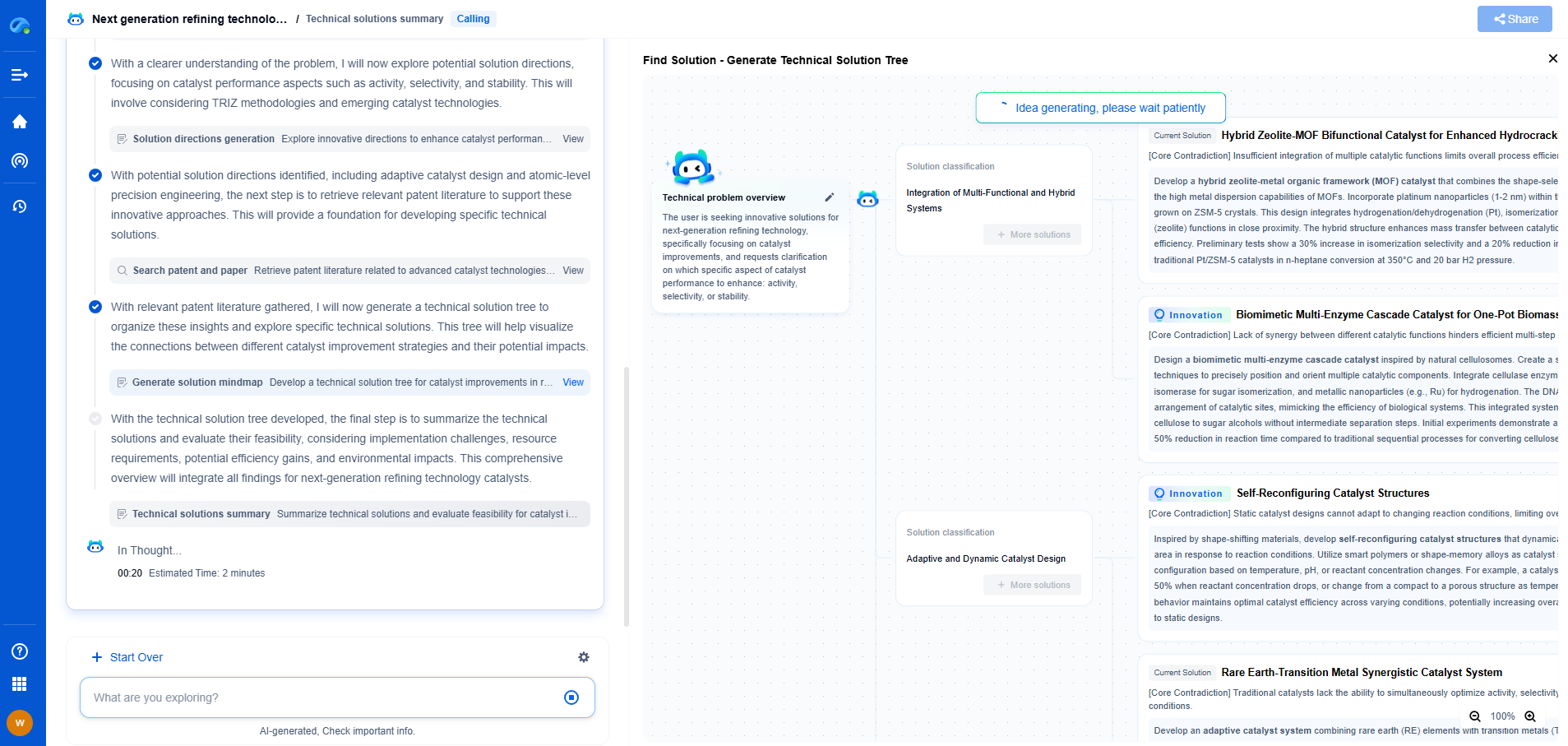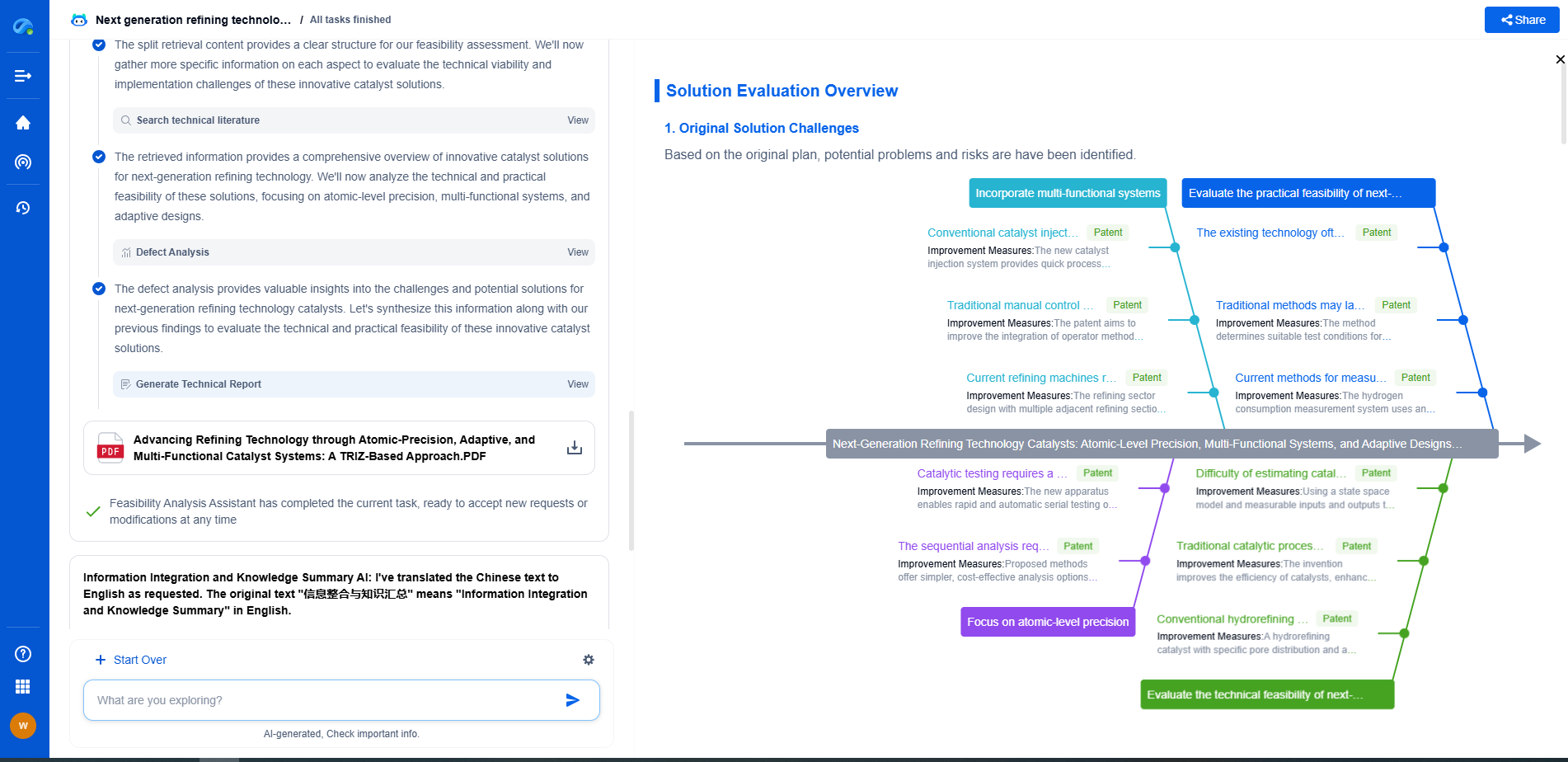Wireless Sensor Network Interference: Mitigating 2.4GHz Band Congestion
JUL 9, 2025 |
The 2.4GHz band is one of the most commonly used frequency bands for wireless communication. It powers a wide array of devices including Wi-Fi routers, Bluetooth devices, microwave ovens, and various wireless sensors. Despite its ubiquity, this frequency band often suffers from congestion and interference, which can degrade the performance of wireless sensor networks (WSNs). In this blog, we will explore the causes of 2.4GHz congestion, its impact on wireless sensor networks, and effective strategies for mitigating interference.
Understanding Wireless Sensor Network Interference
Wireless sensor networks are integral to modern technology, facilitating seamless communication between devices, gathering vital data, and supporting automation processes. However, the efficacy of these networks can be significantly impaired by interference. Interference occurs when multiple devices use the same frequency band, causing signal overlap and degradation. In the 2.4GHz band, interference is a common issue due to the high number of devices operating simultaneously in this spectrum.
Causes of 2.4GHz Band Congestion
1. **High Device Density**: In urban areas and environments with numerous electronic devices, the 2.4GHz band can become overcrowded. The presence of multiple Wi-Fi networks, Bluetooth-enabled gadgets, and other wireless devices can lead to significant congestion.
2. **Limited Channels**: The 2.4GHz band offers a limited number of channels, typically around 11 to 14, depending on the region. These channels can overlap, further increasing the likelihood of interference.
3. **Non-Wi-Fi Interference**: Microwaves, cordless phones, and other non-Wi-Fi devices operating in the same frequency range can also contribute to interference, adding to the congestion challenges faced by wireless sensor networks.
Impact on Wireless Sensor Networks
Interference in the 2.4GHz band can have several adverse effects on wireless sensor networks, including:
- **Reduced Data Throughput**: Congestion can lead to packet collisions and loss, reducing the overall data throughput and efficiency of the network.
- **Increased Latency**: As devices struggle to communicate amidst interference, latency may increase, causing delays in data transmission and reception.
- **Decreased Reliability**: Interference can cause frequent disconnections and unreliable communication, hampering the performance and reliability of the network.
Strategies for Mitigating 2.4GHz Interference
1. **Channel Selection and Management**: One of the simplest ways to reduce interference is by selecting the least congested channel. Regularly scanning the network environment to identify the best channel can help mitigate interference.
2. **Frequency Hopping**: Implementing frequency hopping techniques can reduce the impact of interference by rapidly changing the operating frequency to minimize overlap with other devices.
3. **Power Control**: Adjusting the transmission power of devices can help minimize interference. Lowering the power can reduce the range of the signal, thereby decreasing the likelihood of overlapping with other signals.
4. **Spatial Separation**: Physically separating wireless devices can help reduce interference. By increasing the distance between devices, the chances of overlapping signals are minimized.
5. **Use of 5GHz Band**: Where possible, shifting to the 5GHz band can alleviate congestion in the 2.4GHz band. The 5GHz band offers more channels and less interference, making it an attractive alternative for many applications.
Conclusion
Mitigating interference in the 2.4GHz band is crucial for the optimal performance of wireless sensor networks. By understanding the causes of congestion and implementing effective strategies, it is possible to enhance network reliability and efficiency. As technology continues to evolve, staying informed about the latest developments in wireless communication can help maintain robust and reliable sensor networks. By addressing interference proactively, we can ensure that wireless sensor networks continue to support the growing demands of a connected world.
Navigating the evolving world of electrical measurement—from high-precision signal integrity to advanced test protocols like BERT or TDR—demands more than just expertise; it demands smart tools.
Patsnap Eureka empowers you to keep up—by turning complex patent data, technical parameters, and industry signals into actionable insight. It’s your AI partner for exploring what’s next in test, measurement, and electrical diagnostics.
💡 Try Patsnap Eureka for free and see how it transforms the way you work with electrical measurement technologies.
- R&D
- Intellectual Property
- Life Sciences
- Materials
- Tech Scout
- Unparalleled Data Quality
- Higher Quality Content
- 60% Fewer Hallucinations
Browse by: Latest US Patents, China's latest patents, Technical Efficacy Thesaurus, Application Domain, Technology Topic, Popular Technical Reports.
© 2025 PatSnap. All rights reserved.Legal|Privacy policy|Modern Slavery Act Transparency Statement|Sitemap|About US| Contact US: help@patsnap.com

